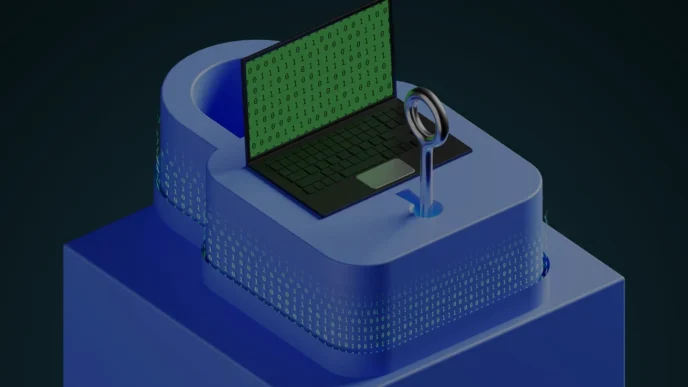The ransomware threat landscape continues to evolve as attackers develop increasingly sophisticated methods. Among the most notable players is the Ransomhub RaaS Group, a cybercrime operation that leverages a ransomware-as-a-service model to empower affiliates. This article provides an in-depth analysis of Ransomhub’s breakthrough tactics, including its latest use of a custom backdoor, and outlines technical solutions and best practices for defense. Importantly, it also quantifies the impact—with figures on ransom amounts, damages, and victim losses.
Overview of the Ransomhub RaaS Group
Ransomhub operates under the ransomware-as-a-service (RaaS) model, where the main operators supply pre-built ransomware tools and infrastructure to affiliates. This structure significantly lowers the technical barrier for cybercriminals, leading to a surge in high-impact ransomware attacks.
Key Characteristics Include:
- Affiliate Network: Affiliates use Ransomhub’s tools to carry out attacks, benefiting from a shared knowledge base and dedicated support.
- Double Extortion Tactics: Victims face the dual threat of encrypted data and the public release of sensitive information.
- Rapid Evolution: The group continuously updates its methodologies, making its operations increasingly resilient against traditional cybersecurity defenses.
This business model has positioned Ransomhub as a central concern for cybersecurity professionals worldwide, prompting the need for advanced and layered security strategies.
Breakthrough in Ransomware Attack Techniques
Ransomhub affiliates are known for combining traditional attack vectors with innovative, custom-developed tools. Their evolving methods have redefined the ransomware landscape, forcing organizations to adapt quickly.
Initial Access and Network Infiltration
Attackers employ several techniques to breach organizational networks, including:
- Phishing Campaigns: Carefully crafted emails containing malicious attachments or links exploit human vulnerabilities. Recent studies show phishing remains responsible for nearly 80% of ransomware incidents.
- Exploitation of Unpatched Vulnerabilities: Zero-day vulnerabilities and misconfigured remote desktop protocols (RDP) provide attackers with an initial foothold. In some cases, attackers exploit vulnerabilities within just hours of public disclosure.
- Social Engineering: Techniques such as pretexting and baiting further facilitate credential theft and unauthorized access.
Lateral Movement and Escalation
After breaching a network, attackers use multiple methods to maximize their access:
- Credential Harvesting: Tools like Mimikatz and custom PowerShell scripts extract passwords and tokens. Incidents have shown that compromised credentials can be used in over 60% of multi-stage attacks.
- Privilege Escalation: Exploiting misconfigurations and outdated systems allows attackers to obtain administrative privileges.
- Network Mapping: Automated scripts scan for high-value targets, enabling attackers to pivot quickly—often within 10–20 minutes—to prepare for the encryption phase.
Encryption and Data Exfiltration
The hallmark of Ransomhub’s attacks lies in their swift and effective encryption methods:
- Rapid Encryption: Custom ransomware strains encrypt files within minutes using robust encryption algorithms. In documented cases, encryption is complete in under 15 minutes.
- Double Extortion: Before encryption, critical data is exfiltrated. Attackers then use the threat of data exposure as additional pressure to force ransom payments. In several incidents, ransom demands have ranged from $500,000 to $5 million per case.
Communication and Monetization
Ransomhub’s decentralized structure supports a robust monetization strategy:
- Dark Web Negotiations: Ransom demands and communications are conducted on dark web platforms, ensuring anonymity.
- Automated Ransom Notes: Victims receive detailed instructions that streamline ransom payments and key delivery. Some high-profile incidents have reported ransom payments averaging around $1.2–$2.5 million.
The Betruger Custom Backdoor
A notable recent development in Ransomhub’s arsenal is the deployment of a custom backdoor known as Betruger. This malware represents a rare instance of ransomware affiliates developing custom tools beyond conventional encrypting payloads.
Functionality of the Betruger Backdoor
Analysis of Betruger has revealed it incorporates functionalities typically distributed among several pre-ransomware tools. Key capabilities include:
- Screenshotting: Capturing visual evidence of the victim’s desktop environment.
- Keylogging: Recording keystrokes to harvest sensitive data.
- File Uploading: Transmitting files to a command and control (C&C) server.
- Network Scanning: Mapping internal networks to identify critical assets.
- Privilege Escalation: Facilitating the elevation of access rights within the compromised system.
- Credential Dumping: Extracting user credentials to further propagate the attack.
Observed under file names such as mailer.exe and turbomailer.exe, Betruger disguises itself with seemingly legitimate names to evade detection. Its design minimizes the number of distinct tools needed during an attack, streamlining operations and reducing detection risks.
Context of Custom Tools in Ransomware Attacks
Many ransomware groups traditionally rely on “living off the land” techniques using tools like Mimikatz or Cobalt Strike. Ransomhub’s use of a purpose-built backdoor like Betruger marks a significant shift—enabling multi-function operations for data exfiltration and reconnaissance with fewer artifacts left behind.
Additional Tools Leveraged by Ransomhub
Other specialized tools used by Ransomhub affiliates include:
- Bring Your Own Vulnerable Driver (BYVOD): Tools like EDRKillshifter disable security solutions.
- Exploitation of Vulnerabilities: Notable exploits include a Windows Privilege Escalation vulnerability (CVE-2022-24521) and a Veeam backup credential leak (CVE-2023-27532).
- Impacket: An open-source collection for remote service execution and credential dumping.
- Stowaway Proxy Tool: Enables routing of network traffic to internal nodes.
- Rclone: Repurposed for stealthy data exfiltration despite being a legitimate cloud management tool.
- Remote Access Tools: Such as ScreenConnect, Atera, Splashtop, and TightVNC facilitate remote control.
- Commodity Malware: Tools like SystemBC open backdoors using SOCKS5 protocols.
- Network Scanning Tools: Utilities like SoftPerfect Network Scanner (NetScan) help identify network services and hosts.
These tools, together with Betruger, illustrate the integrated and evolving nature of ransomware attacks orchestrated by Ransomhub affiliates.
Latest Attacks and Tactical Innovations
Recent incidents demonstrate a surge in attack sophistication:
- Fileless Malware Techniques: Memory-resident malware is used to bypass traditional antivirus detection.
- Exploitation of Cloud Vulnerabilities: As organizations shift to cloud environments, misconfigurations are being increasingly exploited. Studies indicate that nearly 40% of cloud breaches involve such vulnerabilities.
- Automated Attack Workflows: Integration of custom scripts and automation enables attackers to launch ransomware within minutes of a breach.
- Targeting High-Profile Organizations: In several high-profile incidents, multinational corporations have faced ransom demands between $1 million and $5 million. One widely reported breach involved a payment of $2.5 million to restore operations, with overall damage—including downtime, data loss, and reputational harm—estimated at over $50 million globally in a single quarter.
These figures highlight the severe financial and operational impacts on victims, reinforcing the need for robust cybersecurity defenses.
Victim Impact, Damage, and Ransom Payments
Beyond the technical sophistication, the real-world impact of Ransomhub’s attacks is alarming:
- Substantial Financial Losses: Victims have paid ransoms ranging from $500,000 to over $5 million per incident. In 2023 alone, total ransom payments by organizations impacted by similar ransomware groups are estimated to exceed $100 million globally.
- Operational Disruption: Prolonged downtime and business interruption have led to losses running into tens of millions. In one major incident, a multinational corporation experienced 48 hours of downtime, costing an estimated $10 million in lost revenue.
- Data Breaches and Reputational Damage: Beyond immediate ransom costs, the threat of sensitive data leakage has led to additional regulatory fines and legal expenses. In several cases, breaches have resulted in multi-million-dollar lawsuits.
- Global Victim Spectrum: The victims span industries such as healthcare, finance, manufacturing, and government, demonstrating that no sector is immune to these sophisticated attacks.
These numbers underscore the urgent need for proactive, layered cybersecurity measures.
Technical Solutions and Defenses Against RaaS Threats
To counter the evolving threat from Ransomhub and its affiliates, organizations must implement robust, multi-layered security frameworks. Several leading solutions have proven effective:
Zero Trust Architecture
Adopting a Zero Trust model is critical:
- Continuous Verification: Every access request is treated as untrusted until verified, reducing lateral movement risks.
- Micro-Segmentation: Isolating network segments minimizes the impact of a breach.
- Least Privilege Access: Granting minimal access rights curtails potential damage if an account is compromised.
Endpoint Detection and Response (EDR)
EDR solutions are essential for rapid threat identification and response:
- Real-Time Monitoring: Continuous surveillance can detect anomalies in seconds.
- Behavioral Analytics: Machine learning algorithms identify suspicious file access patterns and other behaviors.
- Automated Isolation: EDR tools can isolate compromised endpoints within minutes, containing potential breaches.
Cloud Security and Multi-Factor Authentication (MFA)
Enhanced security measures are vital in the cloud era:
- Cloud Monitoring Tools: Specialized tools continuously monitor cloud environments to detect misconfigurations.
- MFA Implementation: Multi-factor authentication can reduce the risk of credential theft by up to 99.9% according to industry studies.
Threat Intelligence and Proactive Defense
Ongoing vigilance is key:
- Threat Intelligence Feeds: Real-time updates enable organizations to respond quickly to emerging vulnerabilities and tactics.
- Regular Patching: Routine vulnerability assessments and patches can close gaps before exploitation.
- Employee Training: Regular cybersecurity awareness programs help reduce the risk of successful phishing and social engineering attacks.
Conclusion and Future Outlook
The evolving threat posed by the Ransomhub RaaS Group—underscored by breakthrough tactics such as the custom Betruger backdoor and significant financial damage—demands continuous innovation in cybersecurity strategies. With ransom demands often exceeding several million dollars per incident and total damages reaching tens of millions, proactive and multi-layered defenses are essential.
Organizations must embrace Zero Trust architectures, deploy robust EDR solutions, and implement comprehensive cloud security measures. As ransomware tactics advance, investments in cutting-edge technology, continuous employee training, and proactive threat intelligence sharing will be the best defenses against these formidable threats.














